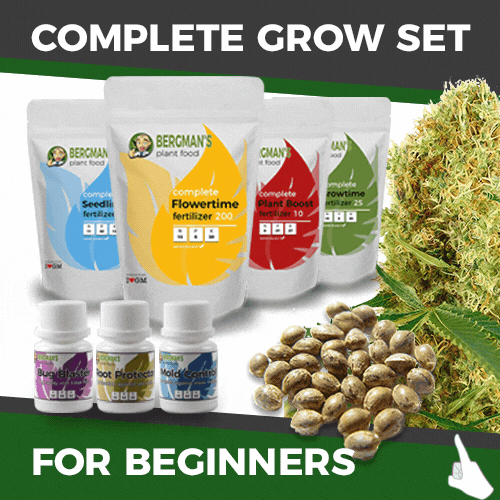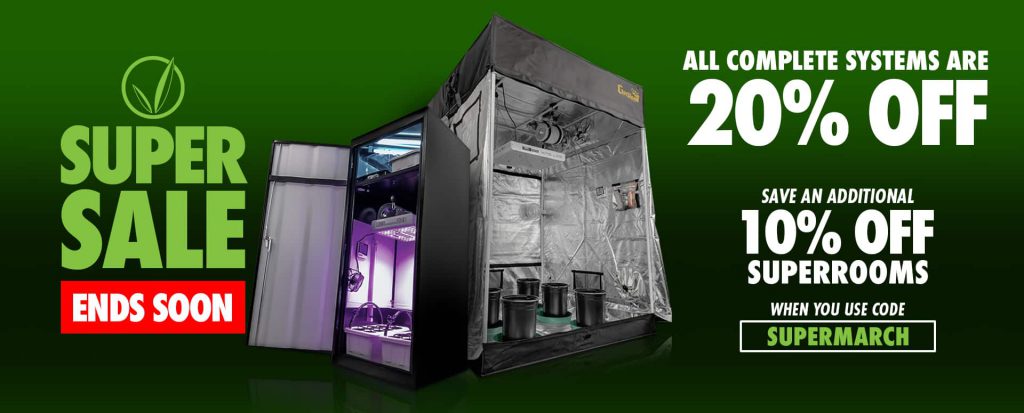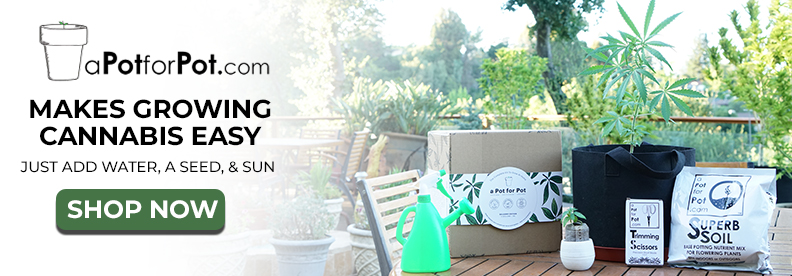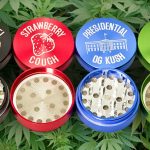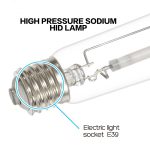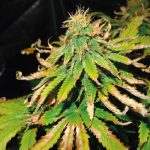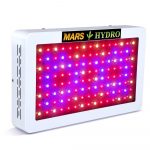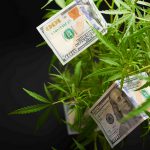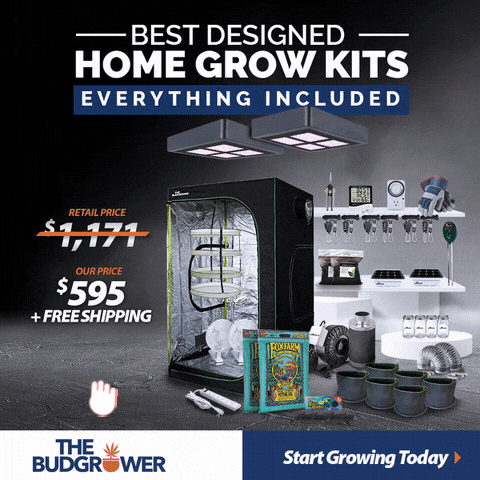Maintaining proper distance between plants and grow lights is crucial for the healthy growth of the crops. Cannabis plants use the energy they capture from the grow lights to maximize yields by growing bigger buds, and healthier stems. In this case, you need to ensure that the plants get adequate light without causing any burns to the plants or overheating.
Maintaining a LED grow light distance chart that helps you not go overboard when monitoring light levels is the best way to do this. Plants go through several growth stages before harvesting. The stages all need light for proper growth, but light outputs and distance calculations differ from one stage to the next.
Lighting systems come in different forms that include LEDs, LECs, HPS, CFLs, and T5s. HPS, LEDs, and LECs come with more lighting outputs and are the best for the most potent buds and highest yields. Cannabis growers prefer using LED grow lights because they come with features that provide specific light spectrums that target all the plants’ lighting conditions.
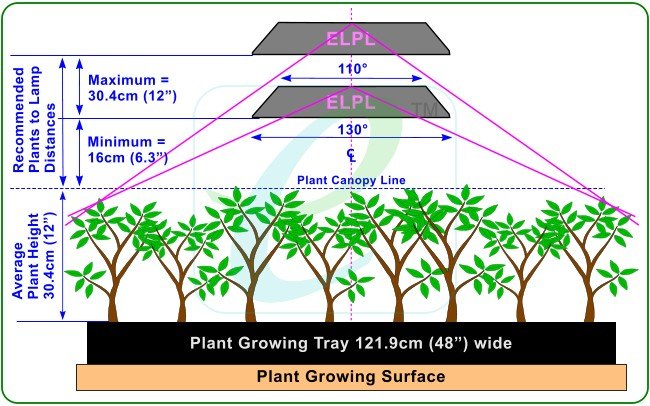
LED grow light technology also provides more cannabis yields over a shorter period than traditional lighting systems do. Other benefits that make LED grow lights a favorite with cannabis growers include lower power consumption and forward heat reduction.
Even with the immense popularity and benefits of using LED grow lights, it is vital to keep a healthy distance between the lights and the plants. Doing this helps achieve the desired results of healthy flowers, the uniform spread of leaves, and the right height.
In this article, we guide you through the appropriate distance levels to maintain between the LED grow lights and cannabis plant canopies.
LED Grow Light Distance Chart
The chart below outlines the distance between LED grow lights and plants during the vegetative and bloom phases depending on the wattage levels.
| HID Wattage | Vegetative Distance | Flowering Distance | Spectrum | Lumens | Size (inches) | Weight |
| 200 W | 12”-20” | 8”-12” | 380-780 nm | 9600 | 11 x 7.9 x 1.8 | 2.8 Lbs. |
| 250-400 W | 16”-30” | 16”-18” | 380-780 nm | 12550 | 11.8 x 6.4 x 2 | 4.5 Lbs. |
| 550-650 W | 24”-30” | 16”-20” | 380-780 nm | 15200 | 14.9 x 9.4 x 4.4 | 5.35 Lbs. |
| 600-800 W | 32”-36” | 18”-22” | 380-780 nm | 15630 | 14.0 x 9.0 x 3.5 | 4.75 Lbs. |
| 900-1000 W | 36”-42” | 18”-24” | 380-780 nm | 22216 | 14.2 x 13.2 x 2.4 | 6.57 Lbs. |
| 1200 Watts | 30”-36” | 18”-24” | 380-780 nm | 38966 | 13.78×9.84 x 2.2 | 6.72 Lbs. |
| 1500 Watts | 30”-36” | 24”-30” | 380-780 nm | 42512 | 15.75×8.39× 2.37 | 9.2 Lbs. |
| 2000 Watts | 26”-30” | 18”-24” | 380-780 nm | 49665 | 39.21×9.97× 3.54 | 7.85 Lbs. |
Other Grow light distance chart
CFL and HPS
Besides LED grow lights, CFLs and HPS grow lights are also popular with some cannabis farmers. For cannabis growers that choose to use these lights instead of LED grow lights, it is only fair to show the distances to maintain between the light and canopy depending on the wattage.
| Wattage | CFL (inches) | HPS (inches) |
| 150 | 6-12 | 8-12 |
| 200 | 6-12 | 9-13 |
| 400 | 6-12 | 12-18 |
| 600 | 6-12 | 14-24 |
| 800 | 6-12 | 16-28 |
| 1000 | 6-12 | 17-30 |
LECs
| Wattage | Distance |
| 315 | 18-20 inches (45-51 cm) or more |
| 630 | 24-26 inches (60-66 cm) or more |
How To Measure LED grow Light for Cannabis Plants
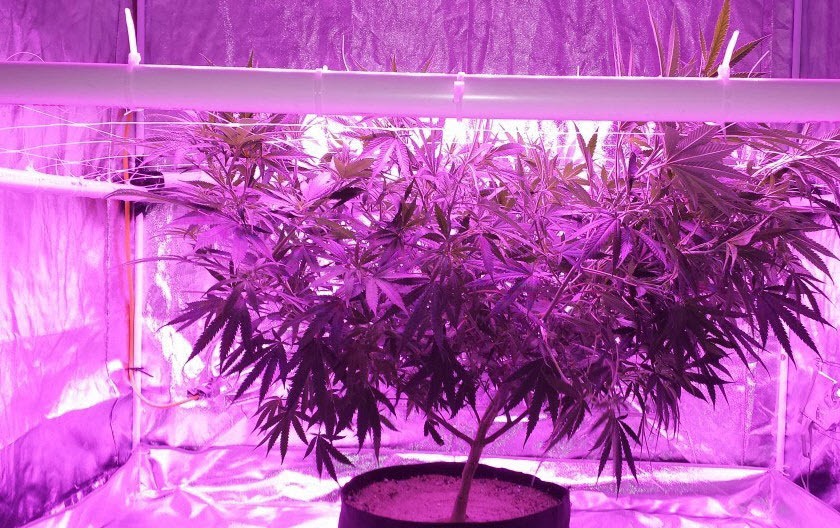
LED grow lights come with different heat intensities and brightness levels depending on the wavelength and wattage. Plants absorb the light that helps with their growth process. Any extra heat from the lights causes damage to the plants’ foliage and the growers considering how much they put into the process.
The most basic way to measure the intensity of the LED grow light is by using the hands. If the heat is not bearable, enough for your skin, then it could also mean that it will be unbearable to the plants. If the dorsal side of your hand feels comfortable under the lights, it means that your plant canopies will feel comfortable too.
Besides the hand method, you can use the PAR and PPFD methods to measure the light intensity. Many cannabis growers do not know how to measure grow light for their plants irrespective of the lighting systems using the par and PPFD methods. The first step would be to understand the definitions of PAR (Photosynthetically Active Radiation and PPFD (Photosynthetic Photon Flux Density)
PAR is the light that cannabis plants or any other type of plants see. PAR is also the light plants use for photosynthesis with ranges from 380 nm to 780 nm.
PPFD, on the other hand, is the total light density received by the plant throughout the growth process. PPFD measurements are in micromoles per square meter, per second, and it provides growers with the ability to get accurate measures for photosynthesis light intensity at their canopy levels. Another benefit of knowing about the PPFD is to avoid placing the lights too close to the canopies, thus preventing discoloration, stunted growth, burning, and bleaching.
Where Should Be The Distance Between LED Grow Lights And Different Stages Of Growth?
Cannabis plants go through three main stages- seedling (cloning), vegetative, and flowering that all need different light intensities.

Distance from Seedlings
The seedling stage is the most vulnerable phase, and it does not need as much light intensity as the other stages. If you have to use lights during the seedling stage, they should be high up above the plants to prevent the soil from drying up. Some growers make the mistake of intensifying the light to promote faster growth, but this is not the best way to go with seedlings. The best distance to maintain between LED grow lights and seedlings is 24 to 35 inches. Once the roots establish and sprouting begins, you can reduce the distance between the lights and the plants.
Distance between light and Clones
Cloning is one of the most popular practices among many cannabis growers. The process involves growing cannabis from cuttings or clippings of mature plants. The distance between LED grow lights and clones is different from that required for the seedlings.
Unlike seedlings, clones need intense light to start the growth process, and the distance from the light to the canopy should be between 14 and 36 inches depending on the plant maturity and wattage of the LED grow light.
The distance required for the Vegetative Stage
The vegetative state requires intense light. It is the phase that plants start maturing and making use of photosynthesis for faster growth. LED grow lights should be closer to the plant canopies during this stage to increase the light intensities.
The best distance requirement between the lights and plant canopy during the vegetative state should be between 12 and 24 inches. Even though the plants need high light intensity during this phase, you should monitor them closely to prevent adverse effects that too much or too little light intensity may cause.
The distance required for the Flowering Stage
The growth cycle’s final stage is the flowering phase when the plant goes through buds’ production and acceleration of stem growth. During the transition period between the vegetative and flowering phases, you should raise the height of the lights from the canopies.
Raising the light’s height should be gradual, and you should monitor the process closely to ensure that the distance does harm the plants in any way. Unlike the vegetative phase, light intensity during the flowering state should be lower. The required distance between the light and the plant canopy should be between 16 and 36 inches.
The plants also tend to grow in height during this stage. If you want to keep the height of the plants short, you do not have to increase the height between the canopies and the light. However, if you keep the lights too close to the canopies, you may end up with plant damage or wider sprawling growth.
Read next: How Many Watts Per Square Foot for Led Grow Lights
The Effects of Too Much Light On Cannabis Plants
Cannabis plants need enough light for faster vegetative growth, photosynthesis process, and development of healthy buds. Some of the reasons cannabis growers prefer LED grow lights to other traditional grow lights is because they are easier to monitor and do not produce too much heat.
Even though cannabis requires lots of light for healthy growth and high yields, too much distresses the plants. The same case happens if you do not provide the plants with enough light. The side effects to expect if the grow lights are too close to the plants are:-
- Irregular or stunted growth
- Sunburn
- Plant defoliation
- Plants withering or dying
- Bleaching or upward-facing leaves
- Yellowing of the leaves
- Green stained veins
PS: Due to the effect of covid 19, many products on amazon stil not unavailable, so I tried to find some other quality supplies, you can click on the image bellow for more information.
New Product: ( On 2021)
1: Thebudgrower ALL-IN-ONE HOME GROW KITS
2: Super Closet BEST-SELLING GROW CABINET
3: Apotforpot COMPLETE KIT TO GROW CANNABIS AT HOME
Wrapping It Up
Every cannabis grower wants to have maximum yields from high-quality buds within the shortest time possible. Grow lights play a major role in determining the time it takes for the crops to mature. Light also improves the crops’ status, but only if you maintain the correct distances from the plant canopies.
Maintaining the required distance also provides you with the desired height and plant uniformity. Calculating the distance required using LED grow lights does not come easy for many cannabis growers. Still, we hope this article makes it easier for you to make correct distance calculations for your next cannabis growth cycle.
